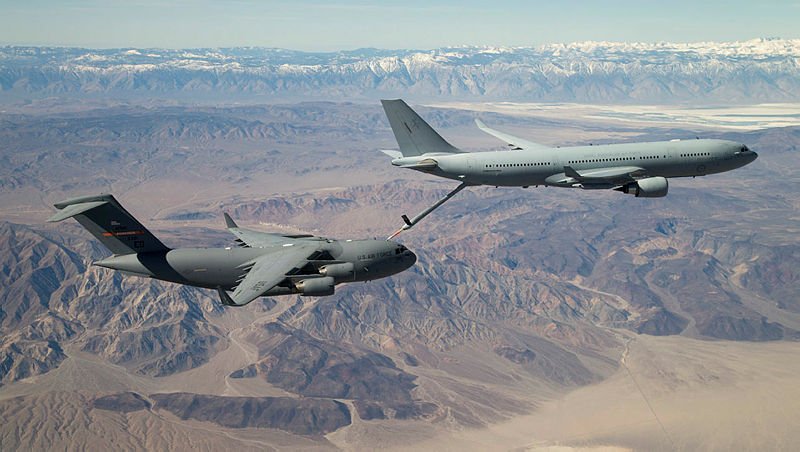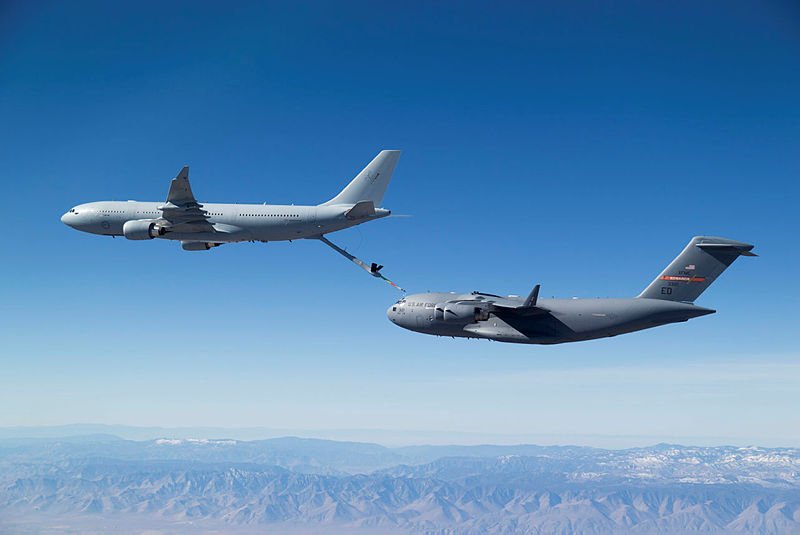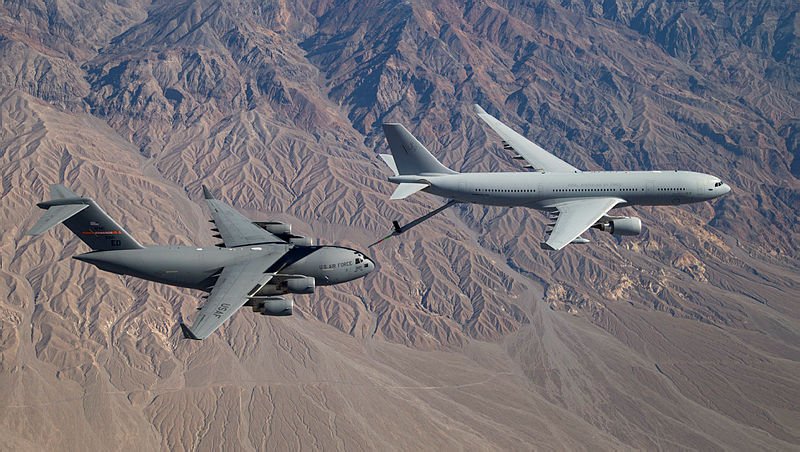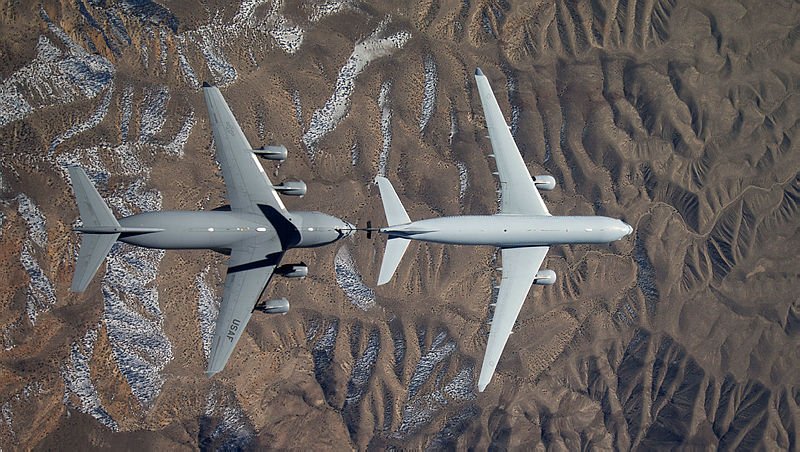2016-02-27 Remember the USAF’s new Airbus tanker?
It has been seen recently over the skies of Edward Air Force base.
It did not just go away after being sidelined by the Boeing protest via the GAO route several years ago, it has become a staple of several allied air forces.
And as the lead Air Force for the KC-30A, the Royal Australian Air Force is preparing its new boom capabilities for a key role in shaping an ability to refuel its entire fleet of aircraft, and those of its allies, many of whom also are operating the KC-30A.
According to a story published by the Australian Ministry of Defence recently:
The first air-to-air refuelling from an RAAF KC-30A Multi Role Tanker Transport (MRTT) to a United States Air Force (USAF) C-17A Globemaster III occurred on February 10 over Edwards Air Force Base in the United States.
The five-hour sortie saw 39 contacts between the KC-30A and C-17A aircraft. During these contacts approximately 6,800 kilograms of fuel was transferred to the C-17A via the KC-30A’s Advanced Refuelling Boom System (ARBS).
Air-to-air refueling of a C-17A significantly increases the aircraft’s range, making it capable of carrying heavy payloads further. Group Captain Adam Williams, the Officer Commanding of Number 86 Wing said this is a major achievement for the KC-30A MRTT.
“The KC-30A is an outstanding platform and we are seeing it work towards full maturity as we expand the list of receiver aircraft types,” Group Captain Williams said.
“The ARBS is a key enabler for the Air Force with most of the RAAF’s future fleet requiring boom type refuelling rather than hose and drogue.”
“The successful refueling with a USAF C-17A paves the way for trials with our own C-17A’s from No 36 Squadron in the near future.”
RAAF C-17A crews will soon begin refuelling trials with the KC-30A, having trained in the role in late 2015 with a Republic of Singapore Air Force KC-135 tanker.
One KC-30A from Number 33 Squadron, RAAF Base Amberley, is currently deployed to the United States to conduct these trials. More trials between a KC-30A and a USAF C-17A aircraft are scheduled to occur over the coming days, along with refuelling trials with USAF F-15 and F-16 fighters.
The RAAF operates five KC-30A MRTTs, with two more joining the fleet from 2018. The KC-30A has a fuel capacity of more than 100 tons, allowing it to fly up to 1800 kilometres from its home base and offload up to 50 tons of fuel for four hours.
The RAAF also operates a fleet of eight C-17A transport aircraft, the latest two examples of which were delivered in 2015.
These aircraft are extensively employed in support of Defence operations abroad, and are currently conducting missions to Antarctica for the Australian Antarctic Division.
The KC-30A’s ARBS is also compatible with refueling the F-35A Lightning II, as well as the E-7A Wedgetail, P-8A Poseidon, and other KC-30As.
Each KC-30A is also equipped with two hose-and-drogue refuelling pods that are compatible with the RAAF’s own Hornet and Super Hornet strike fighters, and the Growler electronic attack aircraft.
When one looks through the recent Australian Defence White Paper and its accompanying documents, it is very clear how important the KC-30A is as an enabler of extended Australian defense.
For example on pages 95-96 of the White Paper, this point is highlighted:
The Government will acquire advanced air defence and high-speed, long-range strike weapons for the air combat fleet capable of attacking land and maritime targets.
Two additional KC-30A air-to-air refuellers will be introduced into service before the end of this decade, for a total of seven, to extend the range and endurance of our combat aircraft and surveillance platforms.
Consideration will be given to a follow-on acquisition of further air-to-air refuellers, to take the refueller fleet to nine aircraft, to support new aircraft types such as the P-8A Poseidon maritime surveillance aircraft.
And elsewhere, namely in the Defence Integrated Investment Program document, the following is underscored:
The current air-to-air refuellers are larger, heavier and capable of carrying more fuel than their predecessors
The air-to-air refuelling fleet will undergo systems software and hardware upgrades (including to the aircraft’s self-protection systems) throughout its life to ensure its safe and effective operation (page 70).
In short, the KC-30A is a key part of the Australian Defence Force and the evolving Australian defense strategy.
For a look at the KC-30A and its role in the Australian Defence Force, see the following:
https://sldinfo.com/an-update-on-the-airbus-tanker-the-aussie-experience/
https://sldinfo.com/wp-content/uploads/2015/09/Update-on-Airbus-Tanker.pdf
https://sldinfo.com/the-kc-30a-and-wedgetail-the-raaf-shapes-a-way-ahead/






